Blank Karnaugh Map – How One Search Keyword Changed my Way of Thinking
September 1, 2013 Leave a comment
3 Years ago, I wrote a blog post titled “I Heart Karnaugh Maps.” In it, I described a technique that can be used to reduce the complexity of Boolean expressions. I provided sample diagrams as I worked through the technique step by step. In one of them, I added an alt tag of “Blank Karnaugh Map” to describe the starting point of the whole process. Little did I know that defining such a targeted search keyword would alter my perspective about Internet search traffic.
Blank Karnaugh Maps
That blog post has always ranked in the top 20% of all my posts in terms of page views, largely due to the one keyword.
Among my blog’s highest ranking keywords are:
4th “Blank Karnaugh Map”
9th “Karnaugh Map”
12th “Blank Karnaugh Maps”
I first learned about Karnaugh Maps as a programming tool in my undergraduate studies at The Ohio State University. In Math 366: “Discrete Mathematics with Applications” I learned:
- Mathematical formalization and reasoning, logic, and Boolean algebra
- Sets, functions, relations, recursive definitions, and mathematical induction
- Elementary counting principles
In order to refresh my knowledge before my blog post, I read an Electronics book. In neither the book nor the course do I remember a specific need for blank karnaugh maps or images of blank karnaugh maps. Therefore, as time passed, I was lead to wonder, why do so many people need blank karnaugh maps?
Has an Opportunity Presented Itself?
I had a few conversations with fellow software developers who were intrigued by my Karnaugh Map post. Apparently, Karnaugh Maps were drawing more interest than I expected and my site was getting found by people looking to know more about them. I decided to brainstorm ways I could leverage this interest into a software product I could sell. I figured people were already coming to my blog to find information about Karnaugh Maps and software development tips. Wouldn’t a product that uses this technology to improve code be useful to my readers? I decided to call it Logic Reducer.
The Market
By no means am I a good Internet marketer. However, I had recently signed up for the Micropreneur Academy and was learning the value of performing market research before beginning product development. I wanted to make sure that I could plausibly make a profit based on the number of potential users and competition. I used three high-level approaches in my research.
Quantity of Internet Searches
There are various methods to research how many people are looking for a particular topic online. I used Micro Niche Finder to determine that “Karnaugh Maps” was being searched about 1,600 times per month. While this is not a lot, I was encouraged by the quantity of searches of some of the longer-tail keywords and the relative ease with which my website could potentially rank for them.
Occupational Statistics
In order to gauge the number of potential users for my product, I researched U.S. employment data. I estimated there were about 800,000 computer engineers and 200,000 hardware engineers in the United States. These numbers were very encouraging.
Competition
Using Google, I found several applications on the Web that had the features I wanted to build. Many of them were free. However, in reading related forums, it seemed like they often failed because they froze up or had a very limited feature set. Additionally, I did not find any on the Internet that were newer than 2006. Most of the applications were downloadable, thick clients. They were lacking the advantages of being Web products.
Karnaugh Map Minimizer on SourceForce gets .5K hits/day
Logic Minimizer 1.2.1
Karnaugh Map – minimalization software
In 2010, smart phone app stores appeared to still be growing rapidly. I was leaning toward making an iPhone app that could be used as a companion to someone writing software on a personal computer. I found a few apps that already existed:
KarnCalc $.99
Karnaugh Map Optimizer $.99
Logic Shrinker –Free-
While a few cheap apps already existed, I liked that there were not yet any iPad apps. Also, one review of an app stated that if Boolean Simplification (a feature I planned to develop) were included, he would pay 7 or 8 dollars for the app. My findings did not deter me from moving forward to the next step.
How far Did I Go?
I liked that there were potentially many users of my idea. However, there were already very affordable ways to accomplish what I was considering my main value proposal. Therefore, I moved forward cautiously. I was optimistic, so I secured the domain name LogicReducer.com. However, I was concerned that there wasn’t enough market interest so I looked for validation of my idea.
I wanted to have a designer mockup my ideas so I could more clearly describe them. I got a quote from an offshore design agency for 4 screen mockups and 1 logo. It was going to cost $500.
I asked more people about what they thought regarding my idea. The general response was that people were intrigued by the product being a Boolean logic reducer. However, I also posted to the forums in the Micropreneur Academy and multiple people voiced some warnings. They felt it catered to too small of a niche, that I would not be able to gain enough revenue to make the project worthwhile.
I decided to stop working toward building Logic Reducer at that point. I was scared by the surprisingly high $500 investment for mockups and the concerns about the niche.
What Will I Do Next Time?
All in all, I did not spend very much time or money determining if Logic Reducer would be a good product to build, especially when compared to the time it would have taken to complete it and watch it fail. My blog content had exposed a tiny sliver of opportunity on the Internet. I researched that sliver and determined that I couldn’t make enough money from it for it to be worth my time.
However, I still think this is a good strategy for finding business ideas. Bloggers and content producers who have the ability to use analytics to see what topics are of interest to readers can use that knowledge to find problems in the world. Were I to find another surprisingly popular search keyword, I would research related business opportunities similar to how I did it before.
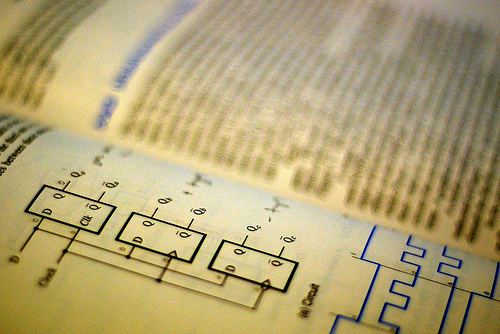 Perhaps that line of code above is the first and easiest way you thought about all the conditions that have to occur in your application’s business logic. You write that line of code, test it in many different scenarios and it works so you think you have done a good job. Well, there are ways to improve upon that line of code by removing logically equivalent Boolean expressions, not to mention some style improvements that might make it more understandable.
Perhaps that line of code above is the first and easiest way you thought about all the conditions that have to occur in your application’s business logic. You write that line of code, test it in many different scenarios and it works so you think you have done a good job. Well, there are ways to improve upon that line of code by removing logically equivalent Boolean expressions, not to mention some style improvements that might make it more understandable.
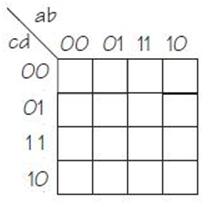
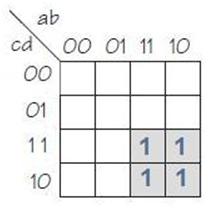
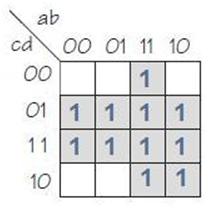
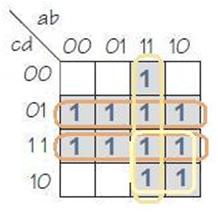
 LinkedIn
LinkedIn Stack Overflow
Stack Overflow